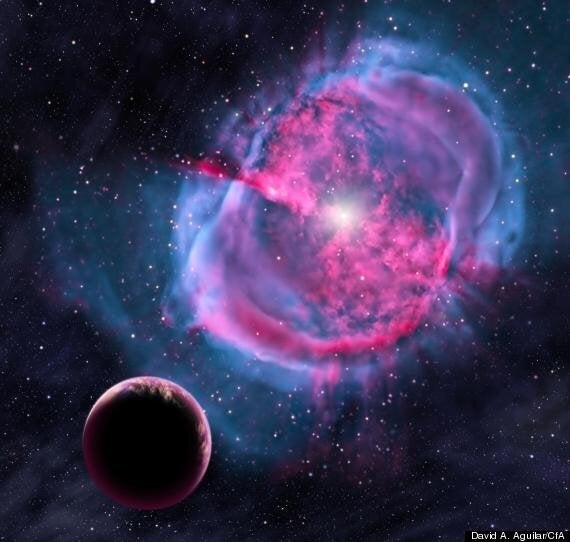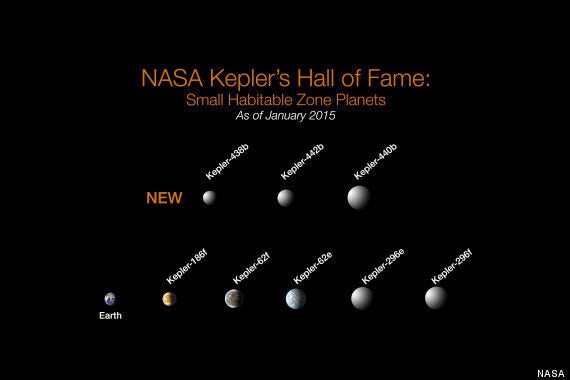We're on brink of some potentially monumental news today as NASA tells us whether the Kepler Telescope has found another Earth.
Yes, that's right -- another planet, just like ours.
The Kepler Telescope mission began in 2009 and has already discovered thousands of planets but NASA, said today's announcement could unveil "something people have dreamed about for thousands of years."

Artist's impression of an Earth-like planet orbiting a star near the end of its life surrounded by a shell of expanding gas
A panel of four experts, including a researcher from the SETI Institute and a professor of astrophysics from Cambridge University will take questions from the audience as well as social media via the hashtag #askNASA.
So far, the search for alien planets has found 4,661 candidate planets and 1,028 planets.

Illustrations of the newfound exoplanets pictured next to Earth. Click on the image to enlarge
Last year, NASA announced the discovery of an "Earth-size planet orbiting a star in the "habitable zone" -- the range of distance from a star where liquid water might pool on the surface of an orbiting planet."
At the time, Elisa Quintana, research scientist at the SETI Institute said: "We know of just one planet where life exists -- Earth.
"When we search for life outside our solar system we focus on finding planets with characteristics that mimic that of Earth."
The process of discovering planets just like ours is painstakingly complex that require scientists to measure the change in the brightness of distant stars to determine "a planet's orbit, distance from its star and its size."
The journey so far has not been an easy one. In April 2013, just fours years after the Kepler mission began, NASA had to deal with a fault in the spacecraft's stabilising systems, which meant the telescope could not orientate itself to observe stars with sufficient accuracy.
Eight months later, NASA had to give up on fixing the troubled aircraft.
However, the setbacks don't appear to have stemmed the stream of planet-centric discoveries.
In January, another eight planets, including two very earth-like ones, were found.
By "small" astronomers mean planets with less than twice the Earth's diameter. "Most of these planets have a good chance of being rocky, like Earth," said lead scientist Dr Guillermo Torres, from the Harvard-Smithsonian Centre for Astrophysics in Cambridge, US.
READ MORE:
The two most Earth-like planets, known as Kepler-438b and Kepler-442b, both orbit red dwarf stars that are smaller and cooler than the Sun. With a diameter just 12% bigger than Earth, Kepler-438b has a 70% chance of being rocky, the scientists have calculated. Kepler-442b is about one-third larger than Earth, and the likelihood of it being rocky is around 60%.
To be in the habitable zone, also known as the "Goldilocks zone", a planet must be not too hot or too cold and receive roughly as much sunlight as Earth. Too much heat from its star, and any water would boil away as steam. Too little, and the water would freeze solid.
"For our calculations we chose to adopt the broadest possible limits that can plausibly lead to suitable conditions for life," Dr Torres added. Kepler-438b receives about 40% more light than the Earth giving it a 70% probability of having a habitable zone orbit. In comparison, baking hot Venus has twice as much.